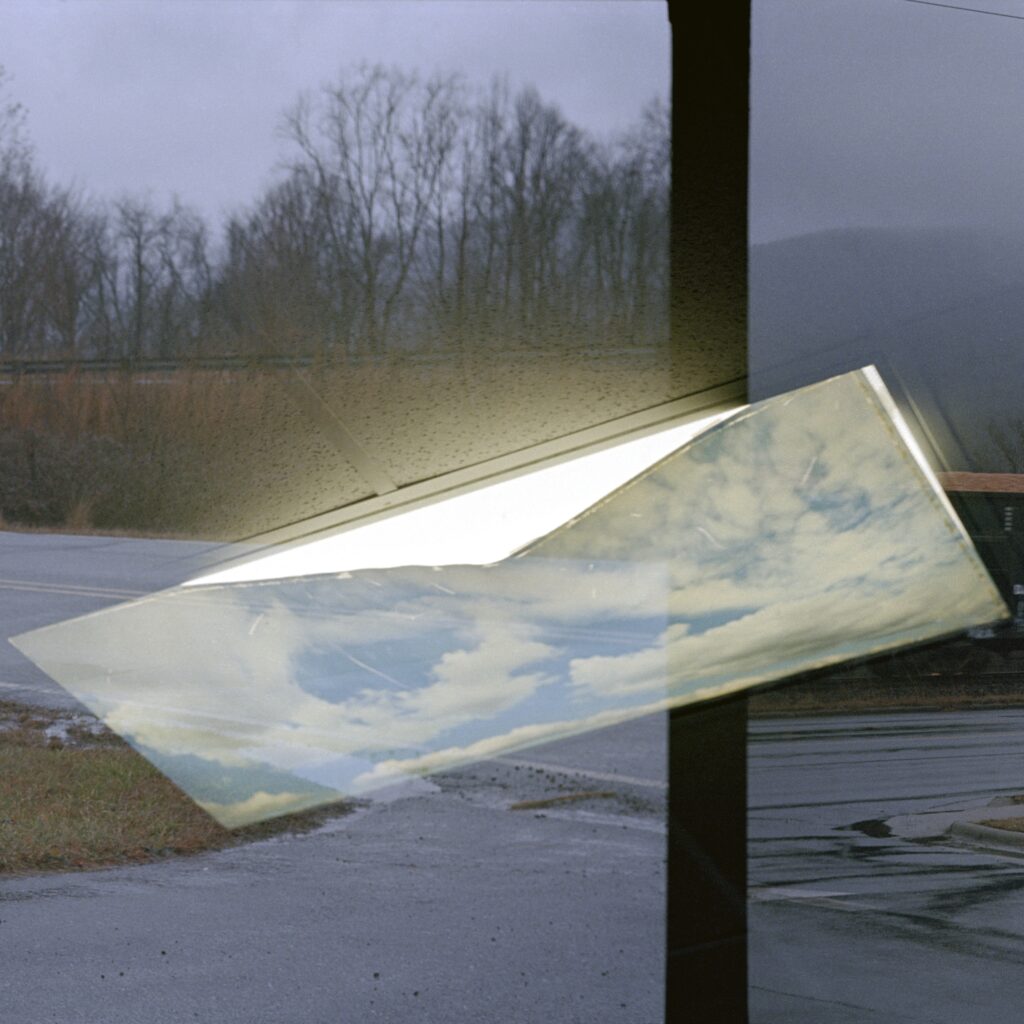
Drew sent me an unedited recording he made of an improvisation with a broken harpsichord that he’d inherited from some Santa Cruz nuns. The harpsichord may or may not have been taken to the Buena Vista Landfill west of Watsonville.
I strung together my favorite bits of the recording then added prepared classical guitar, Axoplasm, and sounds of soda pouring, carpet cleaner, nasal spray, dry erase markers, maggots and millipedes, dripping drains, gurgling pipes, wire brushes, wet towels, shaving cream, manila envelopes, dragging bricks, etc. to make a 20-minute piece of musique concrète. Drew made the cover image.
Drew and I became friends 15+ years ago when I reached out to him on Myspace to suggest our bands do a two-week tour together in the middle of August 2007. He said ‘okay’ and we had a truly wholesome, uneventful time playing at places like F**k Mountain in Chicago, Scrummage in Detroit, and the old Silent Barn.
I immediately felt a strong aesthetic and personal kinship with Drew — we have both described feeling like each other’s East and West Coast counterpart. I don’t know what took so long for us to work together but I’m not surprised at how breezy our collaboration was. I’m really proud to share this recording we made.
Zoom conversation between Drew Erin Adams and Jonathan Pfeffer that took place on July 29, 2024, edited and condensed for clarity.

DEA: Listening to what you made, I feel almost sort of distanced from my original intention. It’s a completely new piece. It sounds like a remix or a musique concrète piece. I feel like you composed it, even though you’re working with my ideas. At the same time, I’m also really excited about it. But when I listen to it, it’s like, “Oh, this is Jonathan Pfeffer remixing my harpsichord” because you basically composed it and arranged everything.
JP: I hear what you’re saying. But is the arrangement really the composition? It’s like Robert Bresson wrote about how the film is born in his head, then dies on the page, then gets resurrected by the actors, then dies on film, and comes alive again when it’s projected.
DEA: I know what you mean. I could see the similarity there a little bit. But it also feels different, because it’s just music. It’s like, if you took “Hey Jude,” then you cut up the lyrics and rearranged them differently, and then took the chord progression and made one part of it four bars longer, and then added a bunch of new sounds, is it still “Hey Jude”?
JP: That’s an important question a lot of us continue to interrogate. The idea of shared authorship is really interesting for us since we’re both used to playing roles within projects with other people where we create spaces for other people but kind of call the shots.
DEA: I think our roles here are a bit blurrier. I felt like when I was improvising on the harpsichord, it felt familiar in a weird way. It was also cathartic just moving through it and finding sounds in my mom’s quiet garage.
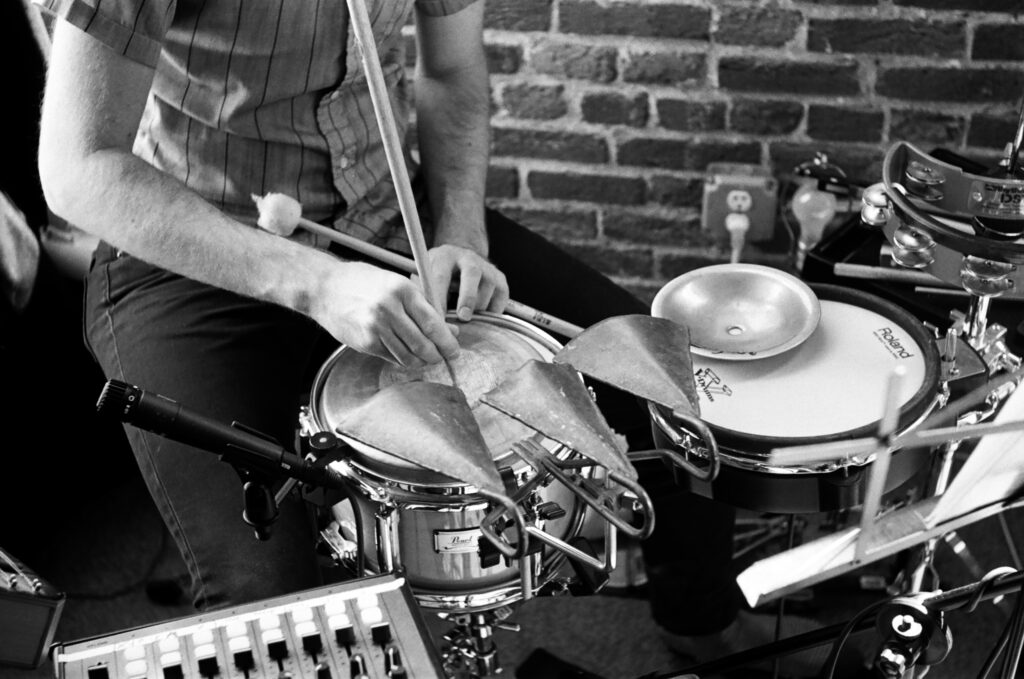
JP: If I had been in the garage when you were recording the harpsichord, I may have suggested you repeat a certain part a few more times or play a section more slowly. I’m not sure if those suggestions fundamentally alter the composition. At the same time, I think my role on this record goes beyond that of a beard-stroking producer character. To me, this felt pretty collaborative in that you brought all the core material to the table, then I contributed by selecting the bits that spoke to me. But all my decisions were based on your original material, which I didn’t modify drastically. There are a couple of sections where I stretch you out a little bit or have you repeat certain phrases a couple of times.
I remember when we originally talked about this idea, you suggested alternating between the unadorned harpsichord and my stuff. That was in the back of my mind, but I mostly listened to the harpsichord and tried to make decisions that accentuated its damage. My hope was to orchestrate the creaks, wheezes, rattles, and resonance.
I think something about the way Al Johnson from U.S. Maple embodied a particularly American brand of marginal existence that vacillates between defiance and desperation may have leaked into how I approached our music. I think we both wanted to burrow into the brokenness as opposed to trying to pretend like this harpsichord isn’t broken, you know?
DEA: Yeah, I think that’s sort of my bread and butter in a lot of ways, because I’m not primarily an improviser even though I’ve done a lot of it. My main focus is composing songs primarily.
JP: I can relate.
DEA: That’s where I get really deep into something is in that process of arranging and composing. I know I gave you notes and you applied them, but I wasn’t there in the room with you to mess around with the sounds. I feel like I kind of missed out on that a little bit. But at the same time, I’m okay with it because I like what you did.
JP: I hear what you’re saying about the distribution of labor but to me this feels like a collaborative record. If we lived in the same city, I think you would have just come over while I was sitting in front of Logic and we would have made more granular decisions together.
There’s a move I associate culturally with hardcore where new bands release rough but committed recordings for public consumption that they still refer to as “demos.” I feel like it’s an interesting middle ground where you might commit to the performances and the overall aesthetic but you still have some wiggle room to make changes to the songs when you record them “properly.” Am I just talking about “mid-fi” recordings?
I think the question of what it means to make a proper demo was lurking in the back of my mind with this record and maybe with how I’m thinking about how I want to make music these days – something about finding a balance between rigor and looseness. I think in line with the demo notion, this recording helped us develop a shared language that we can draw on together in the future when we hopefully do this live in person. I also wanted our music to somehow reflect and honor the circumstances we’re working under. There’s something kind of tossed off about it in a way that I like.
DEA: This is the aesthetic I’m most drawn to. I think why this works well is because we see eye-to-eye on so many things. I’m really interested in recordings that are live and loose; I am less and less interested in pristine studio recordings. I’m just more interested in real people in a room together. Even though it’s a musique concrète piece we’ve made, I feel like that aesthetic is still there.
JP: I hope so.
DEA: It really is candy for the ears. It’s 20 minutes, but by the time it’s done, I felt like I could listen to more of it. So I think in that way, it’s a success.
JP: I’m really glad you think so! I think both of us are interested in applying structure to music that may not immediately suggest form if you’re listening from a certain angle. I think about your music as informed quite heavily by the language of film; I remember Zdrastvootie’s music would move through “scenes” that captured hyper-specific but also open-ended and complex moods that I associate with European and East Asian filmmakers like Hou Hsiao-hsien, Tsai Ming-liang, Claire Denis, Wim Wenders, Ozu, etc. You actually hipped me to a lot of these directors! I think I tend to approach music more as these hyper-detailed architectural propositions. There was a point where I think I may have been too preoccupied with form and structure.
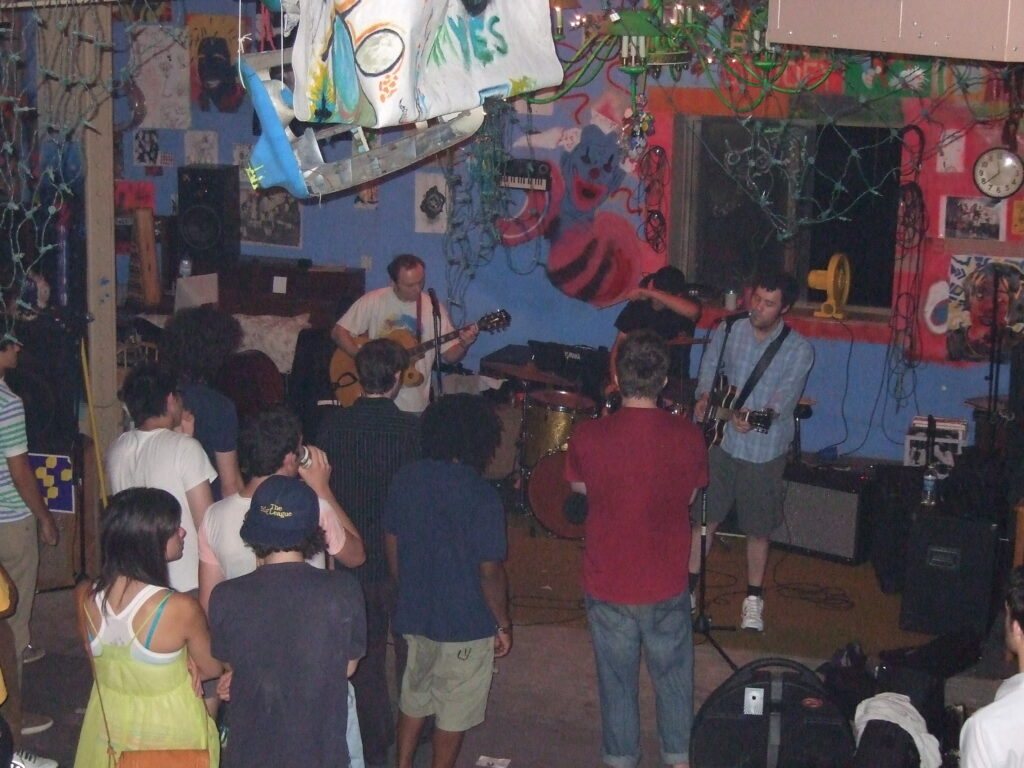
DEA: Oh, the structure for me was always important. One of the most fascinating aspects of music is the whole structure of a piece and how it develops. How do you end a piece? It’s such a beautiful game, and that’s why I love songwriting. You can take it anywhere, but also you can’t. It has to work, but it doesn’t have to be “functional.”
JP: For sure! I’m not saying that the mood or atmosphere wasn’t important to me either. I think of the form as the piece but the form is also dictated by the material. This is why I think of you as the co-composer of this record: I was just kind of following the form I heard you set out in that original recording – what and how you played dictated the way one section moved into the next. There’s this fantastic moment on our recording where you hit the strings so hard that the mic clips. It sounds so aggressive, but it also has this incredible clarity and air to it. To me, that brief moment suggested so many potential routes we could take.
DEA: Yeah. I was moving the mic around, too, playing with putting it really close to the strings and then kind of backing off. What you’re saying makes sense and makes me feel like it’s more collaborative than how I originally thought about it. I’ve never worked like this before so it’s been interesting…
It’s also just been great being in contact with you more because we’ve been friends for 15 years, but I don’t see you in person very much. I saw you more in person when I lived in Portland when you’d pass through on tours. We also hung out a couple times when I lived in New York. Our relationship has primarily been on the phone. When I think of my really good friends, you’re one of them.
JP: Likewise.
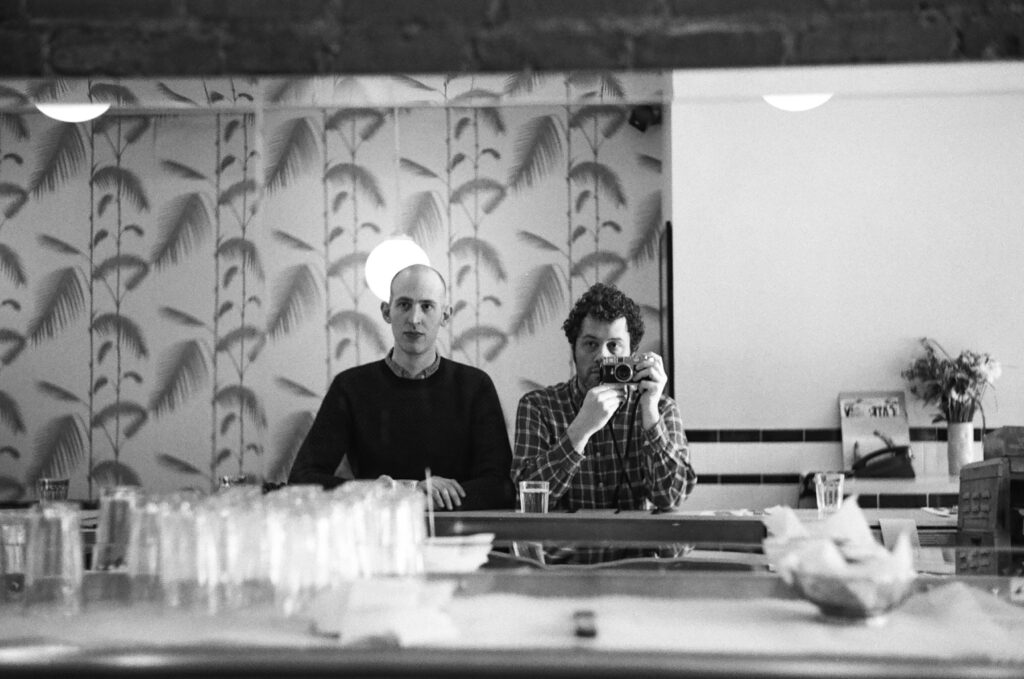
DEA: It’s interesting that we’re making a record together in spite of our lack of proximity. That’s kind of where the world is now.
JP: Agreed! I also think the outcome would be more or less the same if we made this music “properly.” I like that we spent no money on this recording.
DEA: I think I paid $5 for the actual cassette tape that I used to record the harpsichord.
JP: If you had called me when you made the recording, I would have mailed you a tape and you could have saved $5. I bet the production budget conversation is very different when you make films!
DEA: I use actual celluloid so it costs a lot of money. I now understand how to do all these tricks with the Bolex and I know you can digitally emulate some of those effects. But it doesn’t have the look that the old lenses have and the way the light reacts to the film.
JP: You’re making me think of Dogme 95 films that have an intentionally spartan look, but I think those filmmakers are attuned to the visual limitations of working with digital cameras. But that Bolex look doesn’t come cheap.
DEA: There’s something romantic about the Bolex. I love films shot on all different formats. Roger Ebert said, “It’s not what it’s about; it’s how it’s about it.” I remember you mentioned 66 Scenes from America by Jörgen Leth the last time we talked?
JP: Yeah! I had 66 Scenes from America and Lemon by Hollis Frampton in the back of my mind when I was making this record. Jenny Gagalka’s paintings, too. Making the ordinary seem alien by zeroing in on a specific aspect.
DEA: There’s something not right about the sound of the broken harpsichord, but that initial discomfort morphs into the very reason you fall in love with it.
JP: It must have been a fun challenge to figure out what’s possible to coax from an instrument that already has such a limited range in many ways.
DEA: Yeah, since it was broken I was able to find dynamics. Usually it’s the same loudness for every key, but some keys were quieter. I also played in and with the actual strings. I felt like when I was improvising on the harpsichord, it felt familiar in a weird way. It was also cathartic just moving through it and finding sounds in my mom’s quiet garage.
JP: Were you wearing sandals while you were recording?
DEA: I can’t remember. Probably, but it could have been boots. Santa Cruz gets chilly at night with the ocean breeze.
JP: I really hope your mom didn’t take the harpsichord to the dump.
DEA: I’m nervous asking my mom if the harpsichord still exists, but after I recorded it in 2022 they may have gotten rid of it. I brought it out of the shed and decided to mess around with it. It was super fun. I’m afraid that they took it to the dump or sold it because that was the goal when I took it out of the shed. But I remember my mom saying that they couldn’t get rid of it for some reason. If it still exists, I want to drive it back to North Carolina from Santa Cruz and experiment with some alternate tunings. It’s pretty beat-up and moldy, but I think I can mend it.
JP: The harpsichord is this 17th-century European instrument with a Baroque notion of the sacred, but is also a symbol of wealth and status. I just found a blog post that talks about the harpsichord as a symbol of the resurrection: The symbolism of the resurrection was incorporated into the decorating of harpsichords. Symbols from nature were often used, such as the “death” of the caterpillar that then is “resurrected” to life as the butterfly.
DEA: That’s really interesting.
JP: I can’t believe how much that resonates with so many of the decisions I made without knowing anything about the harpsichord’s history.
DEA: Yeah, like the sounds of pesticide spray. You’re killing bugs, but then the bugs come back to life later in the piece. It’s a piece about resurrection.
JP: Totally! I love the way you treated the harpsichord not as this sacred object in a cathedral but as a resonant stringed box that was destined for the dump. The flip side is that I hope it’s clear that I treated the “profane” sounds of pesticide spray, maggots, dry erase markers, and gurgling pipes as somewhat sacred. Your original recording really digs into its brokenness; you recorded yourself poking and pointing at the different cracks in the sound. I wanted to fill in the cracks somehow.
DEA: Can you hear the bugs in the background? I first moved to the mountains in 2018. In the summertime, there were so many bugs everywhere — bugs I’d never seen before crawling on you. Fast forward six years later and I feel “whatever” about spiders crawling on my shirt or flying in my face.

JP: There’s a certain ruggedness you embody but it’s also about the kind of lifestyle you’re comfortable with? Do you feel like your lifestyle in North Carolina is a continuation of how you lived in Santa Cruz?
DEA: I grew up a mile away from downtown Santa Cruz, but there would sometimes be deer in our yard. There was wildlife around — lots of birds, all kinds of critters, mountain lions. We weren’t in the mountains even though I spent a lot of time there. My friends and neighbors who live near the Santa Cruz mountains have to deal with fires all the time. Did you know where I live in North Carolina is technically a rainforest? It rains quite a bit. Sometimes in the summer it’ll rain like every evening just for a few minutes. We’re not really worried about fires up here at all.
JP: I think of both Santa Cruz and Asheville as kind of crunchy college towns — hippie-ish, farmer’s markets, bike co-ops, progressive politics, easygoing pace of life…
DEA: Yeah, both towns are siblings. You use the word “hippie” a lot.
JP: [Smiling] Aren’t we trying to figure out if that’s your true nature?
DEA: I’m a hippie in a way that I aspire not to conform. Not that I’m comparing myself to them, but you could say that people like Harry Partch and Milford Graves were drawn to hippie-ish things.
JP: I feel like you identify so strongly with many developments of the 20th century, so maybe the hippie-ish quality I perceive is just you existing in the wrong time.
DEA: [Sighs] Maybe I am from the wrong time. Maybe not. Maybe it’s good that I’m around now.
JP: I think the expectations we both have of art are born of 20th-century sensibilities. How would you describe the prevailing aesthetics of the 21st century to Harry Partch?
DEA: I would probably just say it’s just a pool of all the ideas and accomplishments of the 20th century sort of meshed into this one thing that you can’t really hold onto. And then there’s AI and trap music.
[Both laugh]
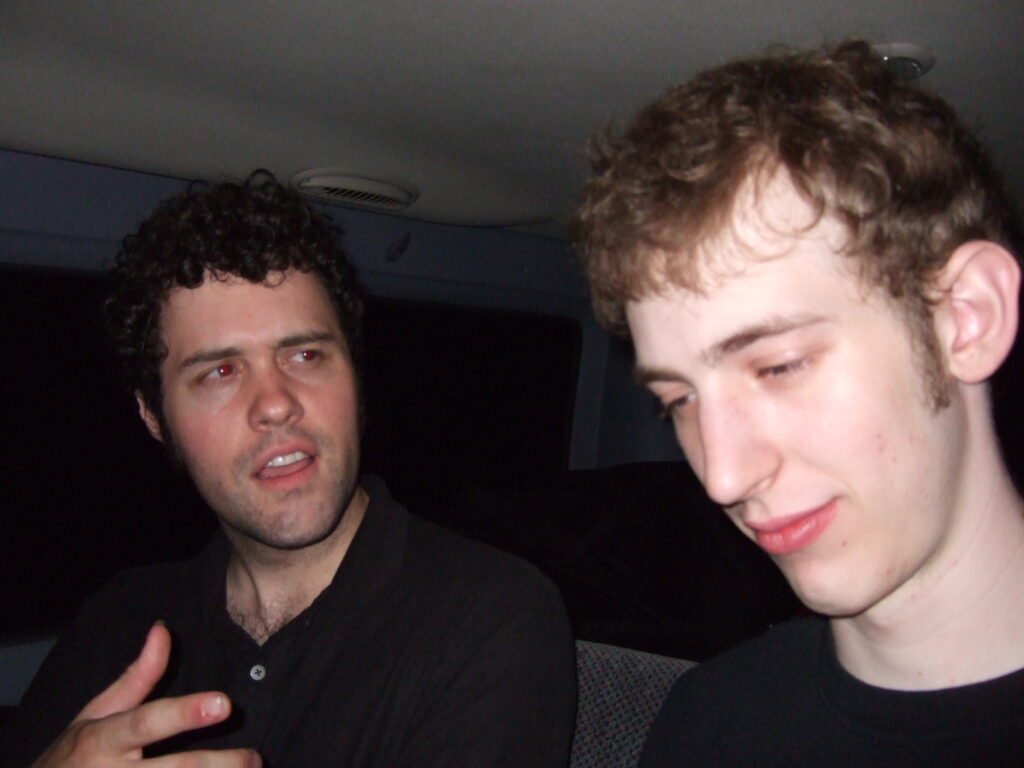
Drew Erin Adams (b. 1982) is a musician, filmmaker, and photographer who lives and works in the mountains of Western North Carolina. He is from Central California, whose geography and history inform much of his work. He studied briefly with Lou Harrison at Cabrillo Community College but is primarily self-taught. In the 2000s, he led Zdrastvootie, a Santa Cruz avant-rock band with whom he released three full-length albums on the Holy Mountain and American Grizzly labels. Aquarius Records described Zdrastvootie as “strange alien melodies intertwined with dense complex time signatures, angular atonal riffage, spastic start stop arrangements, gnarled Ginn-ish guitar noodling, all meshed into dreamy propulsive post-rock that occasionally splinters gloriously into hyper complex free-prog/jazz and staccato bursts of noisy improv chaos.” Drew is a member of the Filmmakers Co-Op and directed the feature films The Cedars in 2013 and Beat the Shift in 2021, both of which explore complex family dynamics and personal redemption against the backdrop of working-class struggle. He has an album of songs he plans to release later this year.
Jonathan Pfeffer (b. 1986) writes, makes music, draws, and organizes. His work (right now) explores small everyday acts of defiance and subtle comedies of error as responses to the anonymizing influence of the built world on collective ritual and individual identity. His hope is always to document unique experiences of time and space. He lives in Philadelphia where he works as a psychotherapist.
Leave a Reply